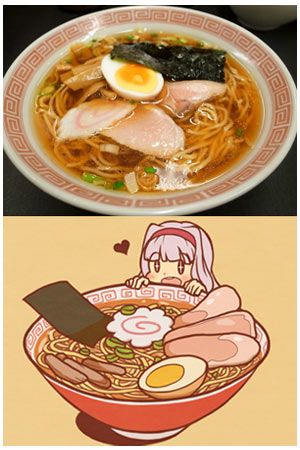There are certain benefits to being in Japan, including the ability to go almost anywhere by train and toilets that wash your butt for you. Another thing I love about living in Japan is having access to “real” ramen. Though ramen is ostensibly considered a Chinese dish (it’s usually written ラーメン, using the katakana writing system reserved for foreign words), modern ramen supposedly dates back to 1910, when a shop owner in Tokyo’s Asakusa created a dish based on noodles popular in cities with Chinese populations like Yokohama, though ramen noodles are cut as with soba and udon, not pulled like Chinese noodles. As with things like “green tea” — a label that could be applied to a half-dozen different kinds of tea, all quite different from each other — the world of ramen proved a lot deeper than it first appeared. The most important part of ramen is the soup, with shoyu (soy sauce), miso (soybean paste) aid shio (“salt,” though we’d call it chicken base) being the main three varieties; other ingredients include a slice of pork called chashu and the swirly thing that’s called a naruto, in case you didn’t know. Different regions of Japan love to brand themselves as being famous for different kinds of ramen, including Sapporo (miso), Fukushima (basic soy sauce), Yokohama (thick noodles and lots of pork pieces), and Hakata, Kyushu (a pork-based white soup ramen).

Ramen in Japan is pretty darned delicious.















